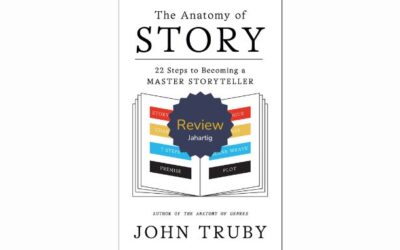General Information
How I came to read this book
My daughter reads romance or horror while my husband prefers action, adventure, or drama. A difference that makes choosing a movie a challenging event in our family. When they both told me they enjoyed reading this book, I pulled it to the top of my reading list. I didn’t expect the book to be so well-written.
Overall Impression
If you haven’t read the book, I would highly recommend it. I found it an enjoyable read. It does a marvelous job of hooking you in the beginning and most of the book is relatively fast-paced (for the genre). If you are writing contemporary fiction, I would recommend this as a great book for craft execution.
Warning
This review is a look under the hood at the general structure and pacing of the book from a writing perspective. It will give spoilers. If you are not a writer, turn back now or be prepared for your eyes to glaze over and your mind to go numb.
Background Information
#1 NEW YORK TIMES BESTSELLER • “An epic adventure about a female athlete perhaps past her prime, brought back to the tennis court for one last grand slam” (Elle), from the author of Malibu Rising, Daisy Jones & The Six, and The Seven Husbands of Evelyn Hugo
Amazon Publishing details (as of August 2023)
- Publisher: Ballantine Books (August 30, 2022)
- Publication date: August 30, 2022
- Commercial Genre: Women’s Fiction and Literary Fiction
- Print length: 371 pages
- Amazon Customer Reviews: 4.4 out of 5 stars with 30k ratings
- Amazon Best Sellers Rankings:
- #1,988 in Kindle Store
- Amazon Editor’s Pick for Best Literature & Fiction
- #9 in Literary Sagas
- #35 in Women’s Literary Fiction
- #49 in Family Saga Fiction
Author
Looking at the author’s website gives little insight into her, her brand (other than the eight books highlighted), or her process. It’s relatively basic and has no blog and little personal information. An interview on the cut is worth reading where Reid discusses the importance of separating herself from the work. A valid caution to us all.
Reid also said in that interview that what she obsesses about is love, but she is not a romance writer. If I had to define her brand, it is how interesting women balance ambition and societal expectations with love and family commitments. Yes, it’s a mouthful, but it’s a balance women deal with daily.
Reid takes inspiration from strong women in various industries as inspiration. In this book, it would be impossible not to think the inspiration for Carrie Soto was any other than Serena Williams. Even as someone who is not a big tennis fan, it was easy to glimpse tennis styles and personality traits of tennis’ elite in the book’s cast. Perhaps it is this way she works real-life characters into her own world that engages us. The book feels as much like an autobiography or tabloid article as a work of fiction.
My under-the-hood book review
Internal Genre: Worldview
External Genre: Performance
The internal genre could be status since the protagonist is concerned about their legacy in the tennis world. However, their position as one of the greatest players in tennis history changes very little. A more significant change occurs in the protagonist’s view of their value as a person and how this is separate from their performance on the court. The protagonist also comes to accept the inevitability of change.
The titles and construct of the chapters make the external genre of sports performance impossible to miss.
Story Structure
This book has a media res structure that begins with the inciting incident of the book.
The first scene does a lot of heavy lifting, beginning with an amazing line that sets up the stakes for the protagonist (and subtly hints at the shard of glass).
“My entire life’s work rests on the outcome of this match.”
The opening scene introduces the main characters and their relationships. It also foreshadows a rift between the protagonist and mentor; the death of the mentor (a common genre convention); and a key factor in the resolution during the ‘Big Performance’ (an obligatory moment). Finally, it is a great visual that is mirrored at the end of the book and highlights the protagonist’s change beautifully. All of this is done in eight pages.
The book then jumps back in time where (for fourteen pages) the backstory of the mentor and protagonist, their relationship, and the mentor’s bona fides are established. It works because we’re already hooked and it’s well written. We get a deep understanding of the wounds each carries. The difficulties they’ve been through. And the intense connection they have. The rest of the first act is a progression of how the protagonist rose through the ranks in the tennis world and her retirement.
The conflict in the first act comes through the struggle to meet her ‘destiny,’ to understand the world, and her place in it. Throughout the story, Reid weaves in details that highlight issues related to race, body type, and gender (a social problem as subtext is a Convention of the Worldview genre). Reid does a good job of using these issues to reinforce the protagonist’s wounds and develop a few others (or offshoots of the main). An entire book could be constructed from this first act, so the pace is fairly quick.
The rest of the book follows the protagonist’s comeback to deal with the inciting incident. At the beginning of the second act, a minor love story is introduced that includes a mirror avatar (character)—an aging athlete who ‘fades away’ into retirement as a potential alternative path.
Characters/Avatars – the good, the bad, and the ugly
The Bad and The Ugly
The ugly is most definitely the (minority) audience reaction. Controversy arose because Reid (a white woman) wrote a non-white protagonist and included Asian and Black characters. For those who didn’t realize, Reid is also not a man, a professional tennis player, a tennis coach, a sports agent … you get my point. Stories would be boring or hardly exist if the storyteller could only have one character. Themselves. While I wholly support the need for own voice stories, we do a disservice when we create an environment that pushes authors to erase the diversity we crave.
The second part of the audience’s reaction that saddens me is the disdain for Carrie. The feeling that she is so unlikable. Perhaps it’s because Carrie is exactly the type of woman I want to read about, or maybe I understand the difficulties of her journey all too well. Either way, I’d like to get past the point where we expect women to be ‘sweet’ and not tough after we beat them and tear them down. I also await the day when society looks at a woman who is strong and muscular and marvels at her beauty and what her body can do.
The Good
Reid does a marvelous job of building characters that justify study and emulation. Her protagonist is interesting, relatable, and likable (or at least understandable). She gives each avatar characteristics that enable them to do double or triple duty within the story’s themes. The story has many characters, but Reid makes it easy to tell them apart by emphasizing their key features.
One theme Reid investigates is the effect longevity has on career achievement, and how age and injuries feed into this. She presents alternative perspectives on training and priorities. Focusing on the physical impact aids in highlighting the costs of competing at the elite level.
Mentor (Javier her father) – his career was cut short due to a knee injury, a factor that shortened his career and lessened overall achievement.
Mirror coach (Lars) – doesn’t worry about the protagonist’s career length, focused solely on immediate performance. Tells the protagonist that rehab and continuing would lead to more loss and becoming a failure as he drops her to coach a younger player.
Protagonist (Carrie) –switches to Mirror coach Lars whose training approach causes knee injury, a decline in performance, Lars dropping her, and retirement (vs. rehabilitation and continuing).
Antagonist (Stepanova) – career ended because of injuries–ankle and shoulder—which contributed to the protagonist’s dominance and highlights the difference in career because of longevity.
Antagonist (Chan) – around the age when the Protagonist retired, she also struggles with an ankle injury. But with the protagonist as a coach later in the story, is able to prolong dominance.
Love interest (Bowe) – ‘aging male star’ who has continued to play through repeated, various injuries and declining success. While the press and protagonist view his decline as pathetic, he views the protagonist’s early retirement as quitting. The protagonist’s ability to beat a male player who is her age and who obtained similar success in his prime also plays to the gender aspect of the story.
Things I didn’t love (as much)
I must preface by saying that I enjoyed this book—enough that it’s my first deep dive into a book for emulation—so these are all picky things.
After the first scene, a huge chunk of backstory was introduced. It was tight and well written, but basically an info dump. A competition with a member’s son followed this section. I felt the scene was a little heavy-handed and didn’t carry its weight. The criticism emphasizes the value of a strong beginning to keep the reader engaged, and how the structure of the story plays a role in achieving that..
Her agent, Gwen, seems underdeveloped even though she is a primary character. Two pages were used to introduce her but I’m confused by her story role. I liked she was another strong, direct woman. Her contrast in dress and appearance to the protagonist is an effective counterpoint. She fills a supporting role, but it feels too minor. Is she a maternal stand-in? Why is her divorce important?
These types of minor details slipped in occasionally and were jarring compared to the overall quality. I didn’t see what Chan being LGBTQ+ had to do with the story and it was a throwaway detail. I could say the same with the appearance of Princess Diana in the stands.
Finally, what the heck happened to Bowe? Yes, he married Carrie, but how he landed after retirement was a loose thread I would have liked tied up.




0 Comments